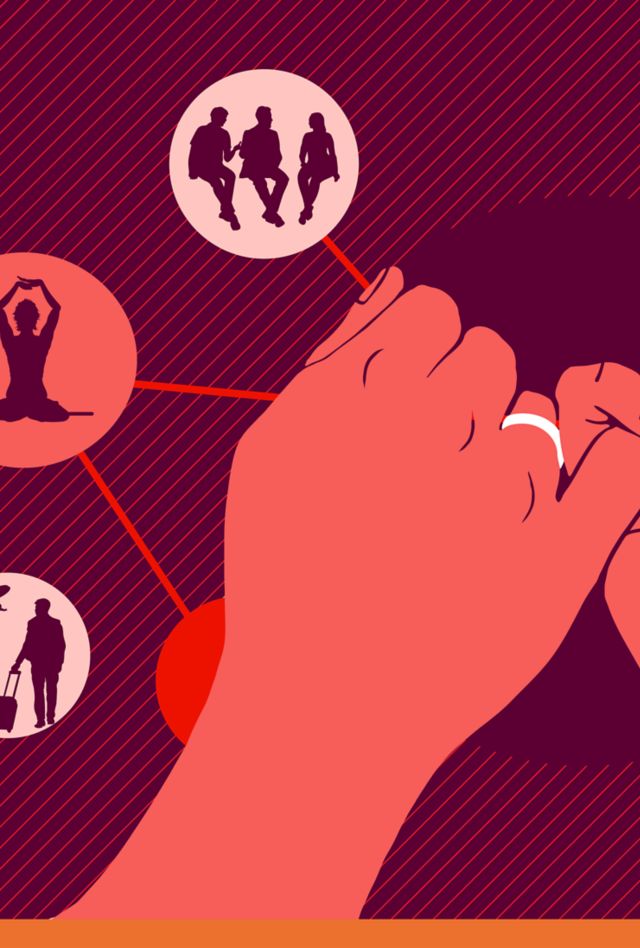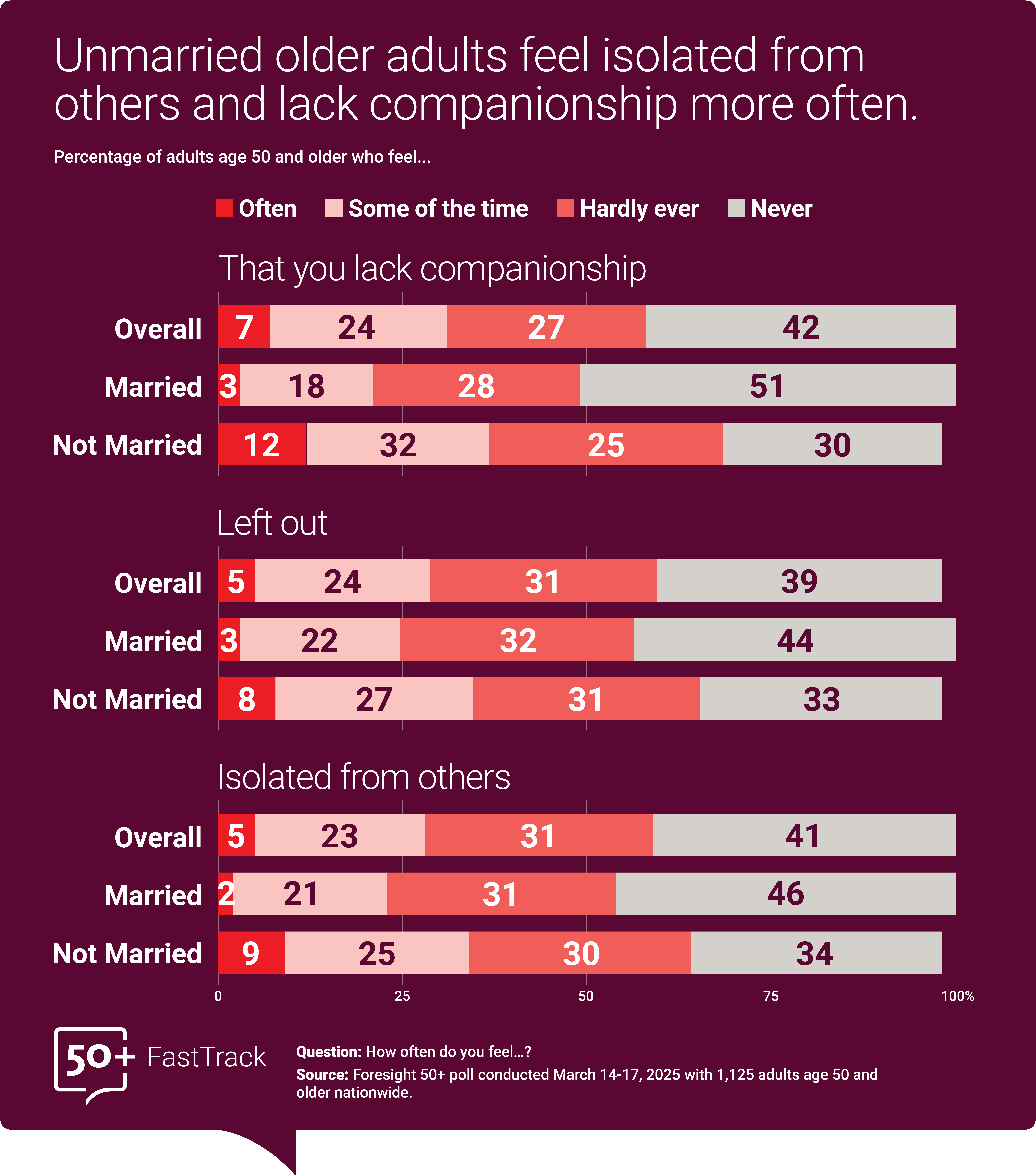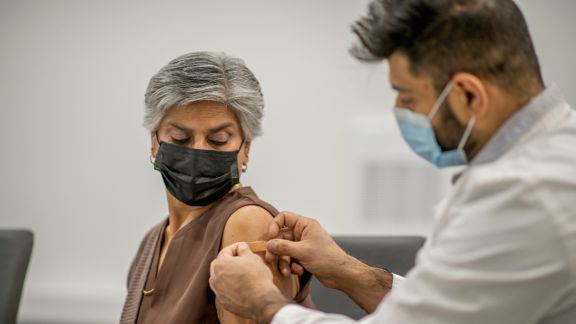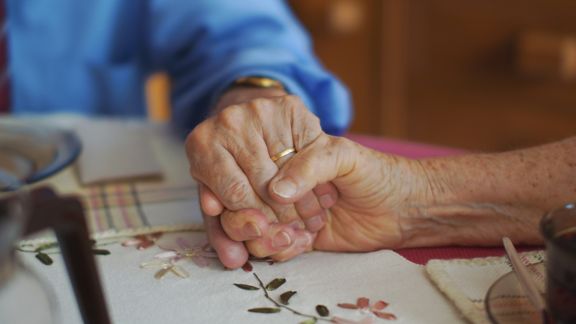Married Older Adults Enjoy Stronger Connections & Greater Relationship Satisfaction than Unmarried Peers

Foresight 50+
Foresight 50+ by AARP and NORC offers deep insight into the views and behaviors of Americans 50 and older.
For inquiries, contact us:
May 2025
In our golden years, being married offers more than just companionship—it strengthens the very strings that bind us. Married older adults report feeling more connected and satisfied with relationships and having firmer social plans in place.
A new Foresight 50+® Omnibus survey finds that three in 10 adults age 50 and older report feeling isolated from others, left out, or lacking companionship at least some of the time. But feelings of isolation and social satisfaction often differ by marital status.
The nationwide study of 1,125 adults age 50 and older sought to understand their experiences with isolation and views toward relationships and social life. The survey explored both social isolation—the objective measure of the quantity and quality of social relationships—and loneliness, which reflects individuals’ subjective feelings of lacking companionship, being left out, or feeling disconnected from others.
Results show that married older adults are less likely to experience loneliness and more likely to express satisfaction with their relationships. This trend holds when we look at older adults’ recreational activities. While most older adults have plans to connect with friends and family in the near future—47 percent intend to do so, while 36 percent probably will—those who are married and age 75 and older are more likely to have these social or recreational plans than 50- to 64-year-olds and 65- to 74-year-olds.
Around a quarter of older adults feel isolated, and many report struggles with relationship satisfaction.
Among older adults, 31 percent feel a lack of companionship, 29 percent feel left out, and 28 percent feel isolated from others at least some of the time. But these numbers look very different for married and unmarried adults. Unmarried older adults experience a lack of companionship more frequently than their married counterparts, with only 3 percent of married adults saying they feel they lack companionship often, compared with 12 percent of unmarried adults.
Feeling left out affects a notable share of older adults—24 percent of older adults feel left out occasionally, and 5 percent feel this way often. Women are hardest hit by these feelings, with 34 percent experiencing this at least some of the time compared to 24 percent of men.
A similar pattern emerges with feelings of isolation. About 23 percent of older adults feel isolated from others occasionally, and 5 percent feel this way often. Unmarried older adults are more likely to feel isolated than those who are married.
This could suggest that marriage, with its built-in companionship and support, may serve as a buffer against the loneliness that often comes with aging.

When asked about their satisfaction with their relationships, there’s some positive news: 55 percent of older adults rate their relationships as excellent or very good, while only 17 percent are less satisfied, rating their relationships as fair or poor. Unmarried older adults are also more likely to be dissatisfied with their relationships, with about one in four rating them as fair or poor, compared to about one in 10 married older adults.
In contrast, fewer older adults are satisfied with their social activities (for example: shopping or going out to eat). Only 38 percent rate their satisfaction as excellent or very good, while 26 percent rate it as fair or poor. Once again, there is a difference between married and unmarried older adults, with 36 percent of unmarried older adults feeling dissatisfied with their social activities, compared to 18 percent of married older adults.
This gap in social satisfaction hints at the potential role marriage can play in fostering a richer social life for seniors. Marriage often brings shared hobbies, a built-in social network, and encouragement to participate in events.

Most older adults—especially those age 75 and older—are planning to engage in social and recreational activities.
A majority say they definitely (47 percent) or probably (36 percent) plan to see friends or family in the coming weeks. Altogether, 73 percent of older adults definitely plan to do at least one of the social or recreational activities asked on the survey (visit friends or family, go shopping, go to a bar or restaurant, attend religious services, exercise at a gym or studio, or go to the movies, a concert, or the theater).
Hobbies like shopping, going out to a bar or restaurant, or attending a religious service were the most popular, while older adults were less likely to say they planned to travel, exercise at a gym or studio, or go to the movies, a concert, or the theater.
Married older adults are also more likely than those who are unmarried to have social and recreational plans within the next few weeks (80 percent vs. 65 percent). And as we get older, and are more likely to be retired, we seem to make more plans for recreational activities. Adults age 75 and older—who are less likely to be employed compared to those age 50 to 64 or 65 to 74 (8 percent vs. 65 percent and 27 percent)—are more likely to have plans for one of these social or recreational activities compared to the 50 to 64 or 65 to 74 age groups (84 percent vs. 70 percent and 71 percent).

Having plans to stay socially active appears to make a meaningful difference in how connected older adults feel. Older adults who plan to participate in at least one social activity—such as visiting friends or family, shopping, dining out, attending religious services, exercising at a gym or studio, or going to a movie, concert, or theater—are less likely to report often or sometimes feeling a lack of companionship (27 percent vs. 43 percent) or feeling isolated from others (23 percent vs. 42 percent) compared to those without such plans.
It’s clear that while aging brings its own set of challenges, these findings suggest that strong personal connections to friends, family, and meaningful activities can help weave a support network that helps seniors ward off isolation and maintain a fulfilling life in their later years. Findings like these may inform policies and programs that support individuals as they age, and now more than ever, policymakers and others need this type of scientifically rigorous, readily available data in real time.
Methodology
These findings come from online and telephone (landline and mobile) interviews with 1,125 U.S. adults on the Foresight 50+ Omnibus Survey conducted March 14-17, 2025. The margin of sampling error was +/- 4.1 percentage points.
This is part of a new series of Foresight 50+ Omnibus Surveys focused on amplifying the voices of people age 50 and over. Now more than ever, policymakers and others need this type of scientifically rigorous, readily available data in real time to help them improve policies and programs for an aging population. The Foresight 50+ FastTrack series—a set of periodic insights using the panel—will meet this need by regularly providing key findings and insights, on an array of topics, which might otherwise be unavailable to the public. The series will also showcase ways in which your organization can use the panel to answer your questions about the highly influential 50+ demographic.
The large Foresight 50+ by AARP and NORC panel can oversample a variety of target groups, such as Medicare beneficiaries, caregivers, those with various health conditions or functional limitations, veterans, frequent travelers, and others. Combined with our affordable TrueNorth® methodology, Foresight 50+ by AARP and NORC can incorporate data from lower-quality sample sources to gain insight into even smaller subpopulations, such as people with food allergies, socially isolated or homebound individuals, and high-net-worth individuals.
For more information on our other surveys, or to learn how we can customize a survey of this demographic to your needs, visit Foresight 50+ or email Foresight50-bd@norc.org. To learn more about how NORC delivers objective, nonpartisan insights and analysis that decision-makers trust across other issue areas and demographics, continue to explore NORC.org.





